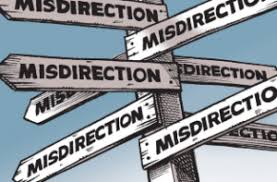The Affordable Connectivity Program: Breaking Down the Barrier of the Digital Divide
Despite the vast deserts of the Antelope Valley, it is no stranger to being on the cutting edge of technology – especially as it is known by many to be the Aerospace Valley. It was here that the barrier of sound was first broken in an aircraft piloted by Captain Chuck Yeager. However, if the Antelope Valley is to continue breaking barriers in the quest for progress it is crucial and essential that the students, parents, grandparents, and all residents have an equitable and inclusive access to the tools of technology and access to the internet.
With the Antelope Valley being the home to the largest population of foster youth in Los Angeles County and the state of California, combined with the rural and exurban nature of the area, there are many community members for whom internet access would be out of reach if not for the Affordable Connectivity Program (ACP). The ACP has played a major role in transforming lives for the better, by offering newfound opportunities to reach for brighter futures. Today, I urge Congress to continue this vital program and recognize the immeasurable benefits it brings to Antelope Valley residents.
In Lancaster and Palmdale alone, over 45,000 households are enrolled in the ACP according to the Universal Service Administrative Company (USAC), a subdivision of the Federal Communications Commission (FCC). Prior to its implementation, the lack of reliable, high-speed internet access left many residents at a distinct disadvantage in education, healthcare, and economic opportunities. The ACP has bridged this divide and helped to level the digital playing field for achieving outcomes that without such access would be out of reach to so many individuals.
This is especially true in the realm of education, where some of the most significant impacts of the ACP in Antelope Valley can be seen. Our students were once forced to contend with spotty internet connections and limited access to online resources, which served as tremendous hindrance to achieving their academic goals, particularly in an increasingly digital learning environment. The ACP enables students of all ages to access educational materials, participate in remote learning, and prepare for a brighter future.
Telehealth services, too, have become an essential lifeline for our rural residents, many of whom previously faced long journeys to access healthcare facilities. We also saw that during COVID the need for such access truly was the difference in being able to safely meet with medical providers or not. With the ACP, we have the opportunity to consult with healthcare professionals remotely, receive medical advice, and even access critical mental health services. This program has not only improved our physical health but has also had a profound impact on our mental well-being, particularly during these challenging times.
Beyond education and healthcare, the ACP has empowered rural entrepreneurs and small businesses in the Antelope Valley. Reliable internet access is a prerequisite for success in today’s interconnected world. With this program, local businesses have the digital infrastructure they need to grow, create jobs, and thrive. Through the ACP small businesses have been given a chance for equal footing to communicate, collaborate, and compete in the robust and ever-changing economy our community today.
If Congress fails to act, though, and the ACP is not extended, then tens of thousands of local households could see sharp increases to their costs to access the internet, and many working families could lose access entirely.
The ACP has become a beacon of hope for communities such as the Antelope Valley and has brought transformation to our neighborhoods. Thanks to the ACP, we have seen improved access to education, healthcare, and economic opportunities from which we were once divided behind a digital barrier. Let’s not go back to being cut off from these resources, and instead, let’s unite in urging Congress to continue funding this essential program and ensure that all Americans are included an equitable opportunity to advance in this digital age.









 While the entire globe is consumed by the coronavirus crisis a whole litany of other problems plaguing the people are being ignored. It is true that crises have a tendency to consume focus; nevertheless, it is imperative that leaders not be myopic to the myriad of other issues still facing our state and country. At this time, politicians seem more intent in measuring who has the bigger… intent, zeal, and authority to reopen the economy, and their talk is just the next cue of misdirection to get the people to “look over here.”
While the entire globe is consumed by the coronavirus crisis a whole litany of other problems plaguing the people are being ignored. It is true that crises have a tendency to consume focus; nevertheless, it is imperative that leaders not be myopic to the myriad of other issues still facing our state and country. At this time, politicians seem more intent in measuring who has the bigger… intent, zeal, and authority to reopen the economy, and their talk is just the next cue of misdirection to get the people to “look over here.” The phrase data driven decision-making seems to be very popular these days. For starters, data drives analysis, analysis makes decisions. Good data, data that is accurate, is important in analysis. Also, just as necessary is sound, critical thinking skills, logic, and rationality by which to reach conclusions based on what is believed to be good data. If either the data OR the analysis is faulty it stands to reason the conclusions will also be faulty.
The phrase data driven decision-making seems to be very popular these days. For starters, data drives analysis, analysis makes decisions. Good data, data that is accurate, is important in analysis. Also, just as necessary is sound, critical thinking skills, logic, and rationality by which to reach conclusions based on what is believed to be good data. If either the data OR the analysis is faulty it stands to reason the conclusions will also be faulty.